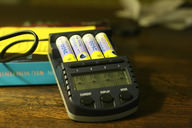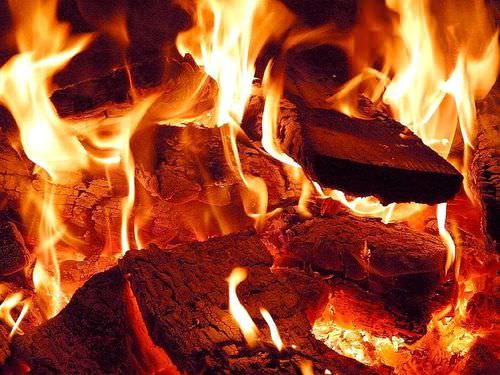20.4: Renewable vs. Nonrenewable Energy Resources
- Page ID
- 5613
\( \newcommand{\vecs}[1]{\overset { \scriptstyle \rightharpoonup} {\mathbf{#1}} } \)
\( \newcommand{\vecd}[1]{\overset{-\!-\!\rightharpoonup}{\vphantom{a}\smash {#1}}} \)
\( \newcommand{\id}{\mathrm{id}}\) \( \newcommand{\Span}{\mathrm{span}}\)
( \newcommand{\kernel}{\mathrm{null}\,}\) \( \newcommand{\range}{\mathrm{range}\,}\)
\( \newcommand{\RealPart}{\mathrm{Re}}\) \( \newcommand{\ImaginaryPart}{\mathrm{Im}}\)
\( \newcommand{\Argument}{\mathrm{Arg}}\) \( \newcommand{\norm}[1]{\| #1 \|}\)
\( \newcommand{\inner}[2]{\langle #1, #2 \rangle}\)
\( \newcommand{\Span}{\mathrm{span}}\)
\( \newcommand{\id}{\mathrm{id}}\)
\( \newcommand{\Span}{\mathrm{span}}\)
\( \newcommand{\kernel}{\mathrm{null}\,}\)
\( \newcommand{\range}{\mathrm{range}\,}\)
\( \newcommand{\RealPart}{\mathrm{Re}}\)
\( \newcommand{\ImaginaryPart}{\mathrm{Im}}\)
\( \newcommand{\Argument}{\mathrm{Arg}}\)
\( \newcommand{\norm}[1]{\| #1 \|}\)
\( \newcommand{\inner}[2]{\langle #1, #2 \rangle}\)
\( \newcommand{\Span}{\mathrm{span}}\) \( \newcommand{\AA}{\unicode[.8,0]{x212B}}\)
\( \newcommand{\vectorA}[1]{\vec{#1}} % arrow\)
\( \newcommand{\vectorAt}[1]{\vec{\text{#1}}} % arrow\)
\( \newcommand{\vectorB}[1]{\overset { \scriptstyle \rightharpoonup} {\mathbf{#1}} } \)
\( \newcommand{\vectorC}[1]{\textbf{#1}} \)
\( \newcommand{\vectorD}[1]{\overrightarrow{#1}} \)
\( \newcommand{\vectorDt}[1]{\overrightarrow{\text{#1}}} \)
\( \newcommand{\vectE}[1]{\overset{-\!-\!\rightharpoonup}{\vphantom{a}\smash{\mathbf {#1}}}} \)
\( \newcommand{\vecs}[1]{\overset { \scriptstyle \rightharpoonup} {\mathbf{#1}} } \)
\( \newcommand{\vecd}[1]{\overset{-\!-\!\rightharpoonup}{\vphantom{a}\smash {#1}}} \)
\(\newcommand{\avec}{\mathbf a}\) \(\newcommand{\bvec}{\mathbf b}\) \(\newcommand{\cvec}{\mathbf c}\) \(\newcommand{\dvec}{\mathbf d}\) \(\newcommand{\dtil}{\widetilde{\mathbf d}}\) \(\newcommand{\evec}{\mathbf e}\) \(\newcommand{\fvec}{\mathbf f}\) \(\newcommand{\nvec}{\mathbf n}\) \(\newcommand{\pvec}{\mathbf p}\) \(\newcommand{\qvec}{\mathbf q}\) \(\newcommand{\svec}{\mathbf s}\) \(\newcommand{\tvec}{\mathbf t}\) \(\newcommand{\uvec}{\mathbf u}\) \(\newcommand{\vvec}{\mathbf v}\) \(\newcommand{\wvec}{\mathbf w}\) \(\newcommand{\xvec}{\mathbf x}\) \(\newcommand{\yvec}{\mathbf y}\) \(\newcommand{\zvec}{\mathbf z}\) \(\newcommand{\rvec}{\mathbf r}\) \(\newcommand{\mvec}{\mathbf m}\) \(\newcommand{\zerovec}{\mathbf 0}\) \(\newcommand{\onevec}{\mathbf 1}\) \(\newcommand{\real}{\mathbb R}\) \(\newcommand{\twovec}[2]{\left[\begin{array}{r}#1 \\ #2 \end{array}\right]}\) \(\newcommand{\ctwovec}[2]{\left[\begin{array}{c}#1 \\ #2 \end{array}\right]}\) \(\newcommand{\threevec}[3]{\left[\begin{array}{r}#1 \\ #2 \\ #3 \end{array}\right]}\) \(\newcommand{\cthreevec}[3]{\left[\begin{array}{c}#1 \\ #2 \\ #3 \end{array}\right]}\) \(\newcommand{\fourvec}[4]{\left[\begin{array}{r}#1 \\ #2 \\ #3 \\ #4 \end{array}\right]}\) \(\newcommand{\cfourvec}[4]{\left[\begin{array}{c}#1 \\ #2 \\ #3 \\ #4 \end{array}\right]}\) \(\newcommand{\fivevec}[5]{\left[\begin{array}{r}#1 \\ #2 \\ #3 \\ #4 \\ #5 \\ \end{array}\right]}\) \(\newcommand{\cfivevec}[5]{\left[\begin{array}{c}#1 \\ #2 \\ #3 \\ #4 \\ #5 \\ \end{array}\right]}\) \(\newcommand{\mattwo}[4]{\left[\begin{array}{rr}#1 \amp #2 \\ #3 \amp #4 \\ \end{array}\right]}\) \(\newcommand{\laspan}[1]{\text{Span}\{#1\}}\) \(\newcommand{\bcal}{\cal B}\) \(\newcommand{\ccal}{\cal C}\) \(\newcommand{\scal}{\cal S}\) \(\newcommand{\wcal}{\cal W}\) \(\newcommand{\ecal}{\cal E}\) \(\newcommand{\coords}[2]{\left\{#1\right\}_{#2}}\) \(\newcommand{\gray}[1]{\color{gray}{#1}}\) \(\newcommand{\lgray}[1]{\color{lightgray}{#1}}\) \(\newcommand{\rank}{\operatorname{rank}}\) \(\newcommand{\row}{\text{Row}}\) \(\newcommand{\col}{\text{Col}}\) \(\renewcommand{\row}{\text{Row}}\) \(\newcommand{\nul}{\text{Nul}}\) \(\newcommand{\var}{\text{Var}}\) \(\newcommand{\corr}{\text{corr}}\) \(\newcommand{\len}[1]{\left|#1\right|}\) \(\newcommand{\bbar}{\overline{\bvec}}\) \(\newcommand{\bhat}{\widehat{\bvec}}\) \(\newcommand{\bperp}{\bvec^\perp}\) \(\newcommand{\xhat}{\widehat{\xvec}}\) \(\newcommand{\vhat}{\widehat{\vvec}}\) \(\newcommand{\uhat}{\widehat{\uvec}}\) \(\newcommand{\what}{\widehat{\wvec}}\) \(\newcommand{\Sighat}{\widehat{\Sigma}}\) \(\newcommand{\lt}{<}\) \(\newcommand{\gt}{>}\) \(\newcommand{\amp}{&}\) \(\definecolor{fillinmathshade}{gray}{0.9}\)Is your amusement park's energy source renewable?
Nearly all amusement parks use non-renewable energy. However, a few are now starting to use renewable energy. The Crealy Great Adventure Park in Devon, England, is going solar! Solar panels will be able to generate enough energy to power most of the park in the summer. When there is extra energy, it will supply the grid. Imagine what an amusement park could do if it were located in a sunny place!
Types of Energy Resources
Energy resources can be put into two categories—renewable or non-renewable. Non-renewable resources are used faster than they can be replaced. Renewable resources can be replaced as quickly as they are used. Renewable resources may also be so abundant that running out is impossible.
The difference between non-renewable and renewable resources is like the difference between ordinary batteries and rechargeable ones. If a flashlight with ordinary batteries goes dead, the batteries need to be replaced. But if the flashlight has rechargeable batteries, the batteries can be placed in a charger. The charger transfers energy from an outlet into the batteries. Once recharged, the batteries can be put back into the flashlight. Rechargeable batteries can be used again and again (Figure below). In this way, the energy in the rechargeable batteries is renewable.
Rechargeable batteries are renewable because they can be refilled with energy. Is the energy they are refilled with always renewable?
Types of Non-Renewable Resources
Fossil fuels include coal, oil, and natural gas. Modern society relies on fossil fuels for energy more than any other source. Millions of years ago, plants used energy from the Sun to form carbon compounds. These compounds were later transformed into coal, oil, or natural gas. Fossil fuels take millions of years to form. For this reason, they are non-renewable. We will use most fossil fuels up in a matter of decades. Burning fossil fuels releases large amounts of pollution. The most important of these may be the greenhouse gas, carbon dioxide.
Types of Renewable Resources
Renewable energy resources include solar, water, wind, biomass, and geothermal power. These resources are usually replaced at the same rate that we use them. Scientists know that the Sun will continue to shine for billions of years. So we can use the solar energy without it ever running out. Water flows from high places to lower ones. Wind blows from areas of high pressure to areas of low pressure. We can capture the kinetic energy of wind and water to generate power. We can count on wind and water to continue to flow! Burning wood (Figure below), is an example of biomass energy. Changing grains into biofuels is biomass energy. Biomass is renewable because we can plant new trees or crops to replace the ones we use. Geothermal energy uses water that was heated by the Earth's interior. Earth's internal heat isn't going anywhere anytime soon, so geothermal energy is considered renewable.
Wood is a renewable resource, but forest ecosystems need time to replenish. Burning wood also releases greenhouse gases.
Even renewable resources can be used unsustainably. We can cut down too many trees without replanting. We might need grains for food rather than biofuels. Some renewable resources are too expensive to be widely used. As the technology improves and more people use renewable energy, the prices will come down. The cost of renewable resources will go down relative to fossil fuels as we use fossil fuels up. In the long run, renewable resources will need to make up a large amount of what we use. If we don't switch soon, the worst effects of climate change will be upon us.
Important Things to Consider About Energy Resources
Before we put effort into increasing the use of an energy source, we should consider two things. Is there a practical way to turn the resource into useful form of energy? For example, it is not practical if we don't get much more energy from burning a fuel than we put into making it. For example, what if it took more energy to make solar panels than we could get from the solar panels once they were working? Then solar energy would not be worth pursuing until better solar panels were developed.
What happens when we turn the resource into energy? What happens when we use that resource? Mining the resource may cause a lot of health problems or environmental damage. Using the resource may create a large amount of pollution. In this case, that fuel may also not be the best choice for an energy resource.
KQED: Climate Watch: Unlocking the Grid
Today we rely on electricity more than ever, but the resources that currently supply our power are finite. The race is on to harness more renewable resources, but getting all that clean energy from production sites to homes and businesses is proving to be a major challenge.
Summary
- Non-renewable resources are used faster than they can be replaced. Once they're gone, they are, for all practical purposes, gone.
- Renewable resources are so abundant or are replaced so rapidly that, for all practical purposes, they can't run out.
- Fossil fuels are the most commonly used non-renewable resources. Renewable resources include solar, wind, hydro, and (possibly) biomass.
- Many factors must be considered when deciding whether or not to use a resource.
Review
- What is a renewable resource? Give three examples.
- What is a non-renewable resource? Give three examples.
- Can a renewable resource become non-renewable?




